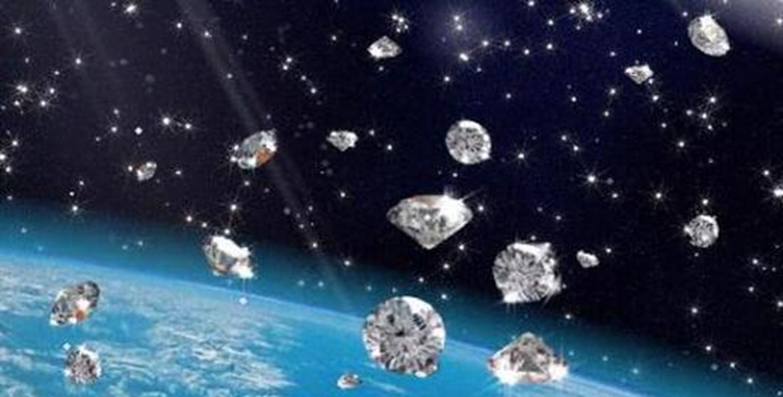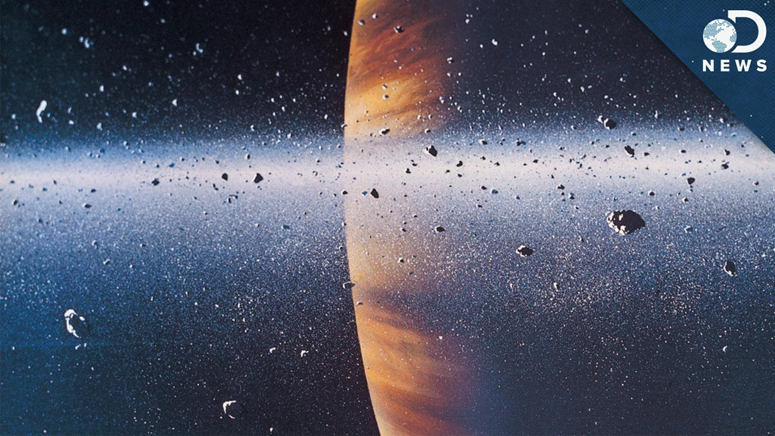A phenomenon that occurs on Saturn and Jupiter causes a regular rain of diamonds

Extreme weather and thunderstorms mean that some planets, such as Saturn, experience steady rains of the precious metal.
According to scientists, the planets Saturn and Jupiter, the two gas giants in our solar system, may be showered with periodic rains of diamonds that fall from the sky on their surfaces.
Scientists attribute this to a combination of strange weather and unusual chemical reactions in these two celestial bodies.
Historical atmospheric data for both gas giants indicate that carbon is abundant in its dazzling crystalline form, leading to a tantalizing potential for diamond formation.
When thunderstorms hit, they turn methane into soot - carbon - which solidifies into chunks of graphite and, eventually, into diamonds.
Scientists who first discovered this phenomenon in 2013 described it as "diamond hailstones", which eventually dissolve into a liquid sea in the planet's hot core.

Scientists estimate that the largest diamond that should emerge from this complex process is about a centimeter in diameter.
Dr. Kevin Binns of the University of Wisconsin-Madison and NASA's Jet Propulsion Laboratory told the BBC that this diamond would be "big enough to fit in a ring, although it would of course be uncut."
He pointed out that it is estimated that Saturn alone generates approximately 1,000 metric tons of diamonds annually. Although direct observation of this phenomenon is elusive, scientists have relied on chemical analysis and sophisticated simulations to confirm their theories.

Dr Baines and Mona Diletsky, of California Specialized Engineering, conducted research to determine whether the giants of the solar system are raining diamonds.
Scientists analyzed predictions of temperature and pressure in the interiors of the two planets, as well as looked at data on how carbon behaves in different conditions. They concluded that the stable diamond crystals would "descend over a huge region" of Saturn in particular.
Dr Baines said: “It all starts in the upper atmosphere, in the alleyways of thunderstorms. Where lightning turns methane into soot. As the soot falls, the pressure on it increases. After about 1,000 miles, it turns into graphite.”

This graphite embarks on a grueling journey of about 6,000 kilometers, turning into a strong, unreactive diamond.
Baines explains that the diamonds continue to fall for another 30,000 km. Once it descends to such extreme depths, the pressure and temperature become "hell", and there is no way for it to remain solid. "It's not certain what happens to the carbon down there," Baines says.
Diamonds will not last on Saturn and Jupiter, as they will gradually turn into seas of liquid carbon.

To find the planets that harbor diamonds forever, you must go to the outer edge of the galaxy, to Uranus and Neptune, where freezing temperatures ensure that the mixture of hydrogen and carbon does not melt.
In 2017, scientists began the hands-on study looking at replicating conditions on these two ice giants in order to see if diamond rain occurred there.
Scientists were able to prove this happens, observing diamond rain at the US Department of Energy's SLAC National Accelerator Laboratory for the first time.
Participants simulated the environment inside the planets by creating shock waves in the plastic using an intense optical laser, able to observe that almost every carbon atom of the original plastic was embedded into tiny diamond structures a few nanometers across.
The diamonds created in the experiment were tiny, but the real diamonds that fall on Uranus and Neptune are expected to be much larger, in the order of millions of carats.
Source: Express

